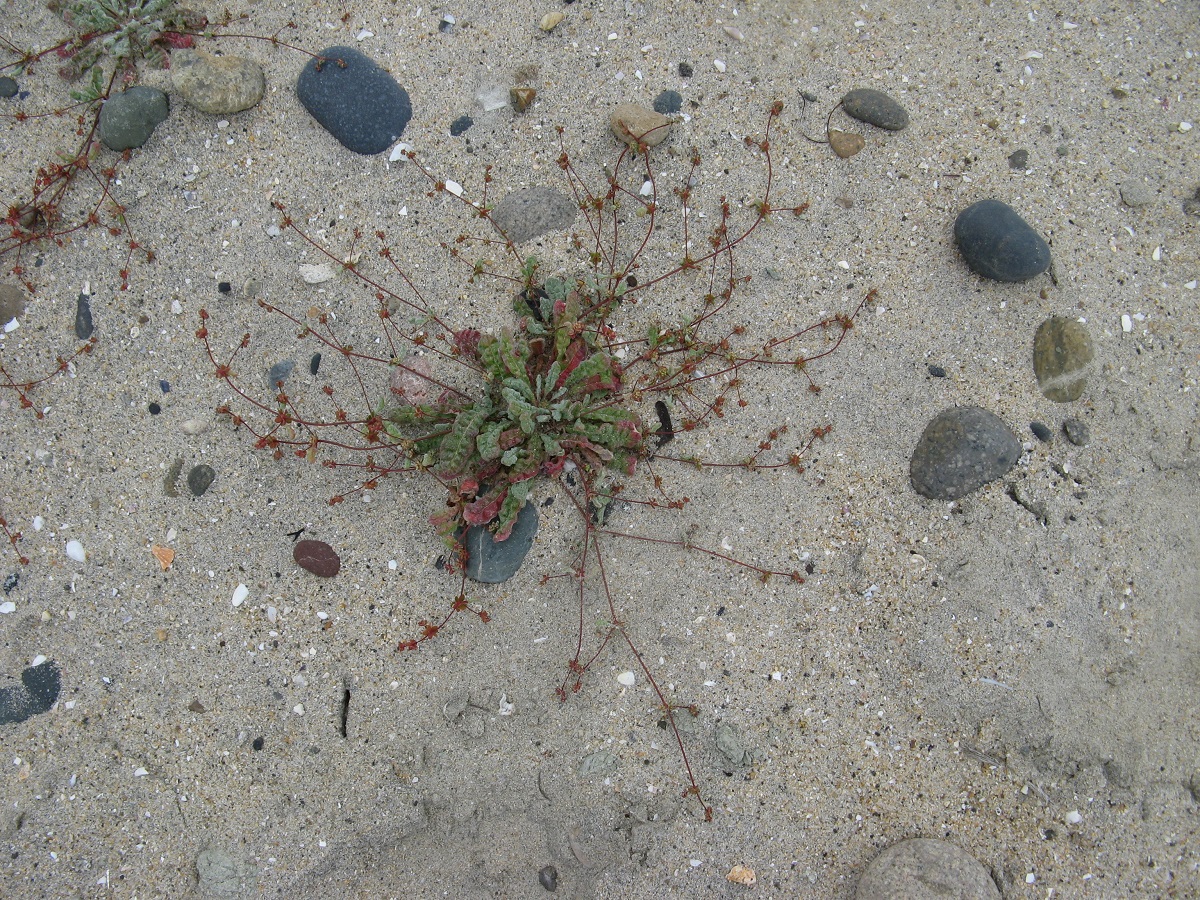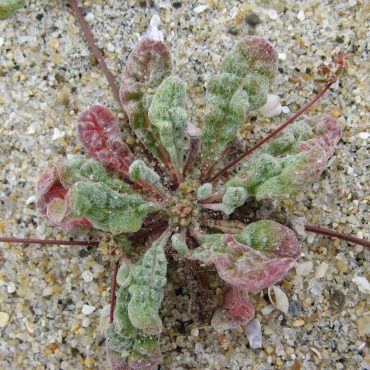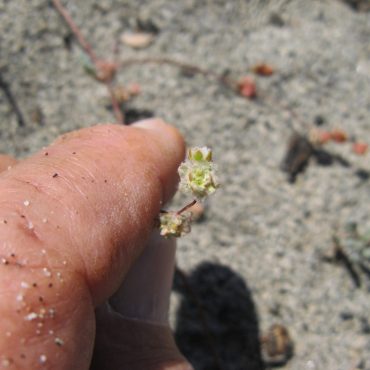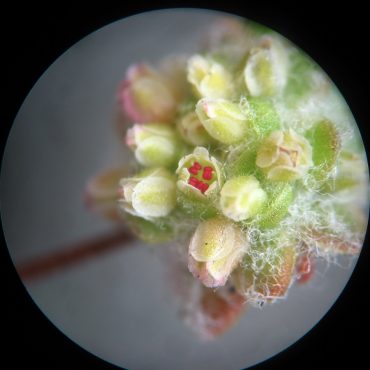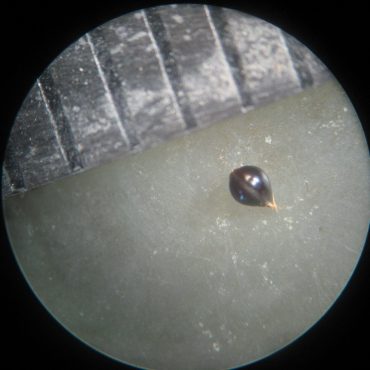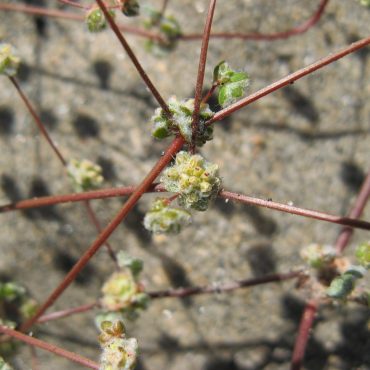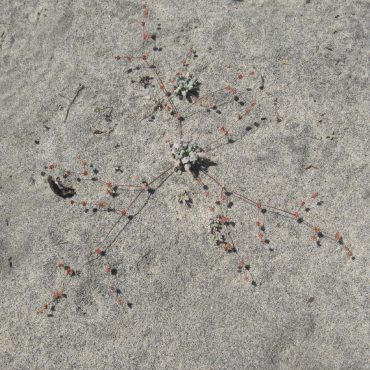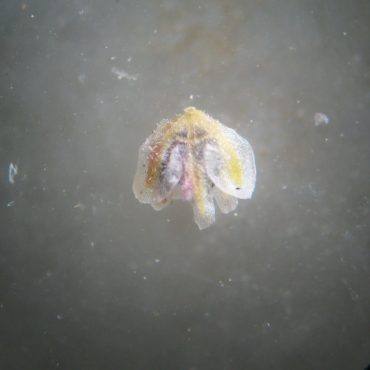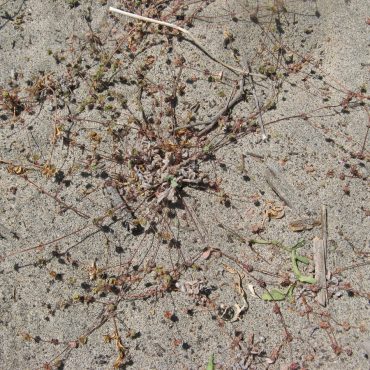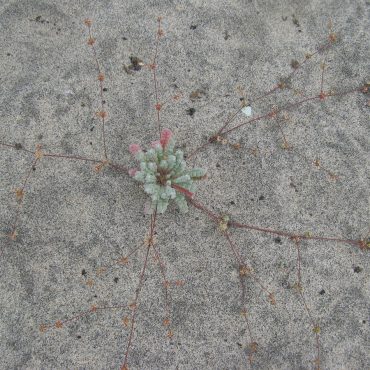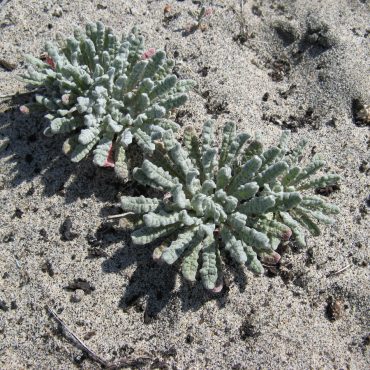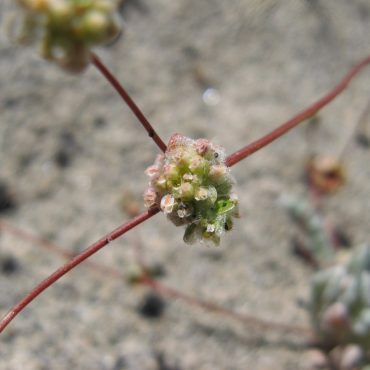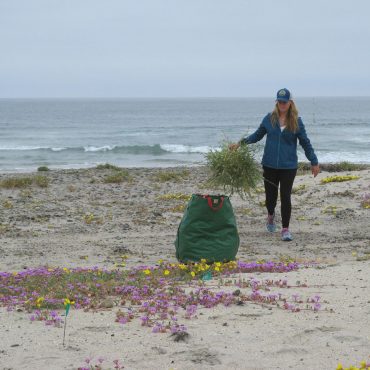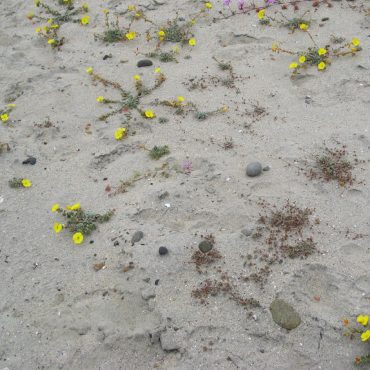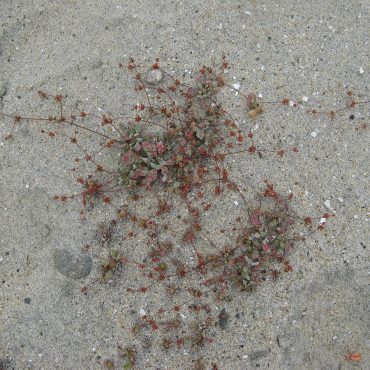Coast woolly heads (Nemacaulis denudata) is a California native, one of the few adapted to the hot, dry, windy, salty coastal strand environment. Unlike its neighbors, such as beach primrose and sand verbena, which celebrate another year of life with a vibrant display of spring color, coast woolly heads remains small and inconspicuous, hugging the ground and blending in against the sandy background. Tiny flowers occur in small hemispherical clusters, widely spaced along horizontal, thread-like stems. The plant looks somewhat like the remains of a messy sewing project.
Coast woolly heads is listed by California Native Plant Society as rare, threatened or endangered, not only because of habitat loss but because of inadvertant damage by foot-traffic.
The common name comes from the dense mass of long, woolly hairs that surrounds the flowers in the rounded clusters.

